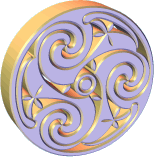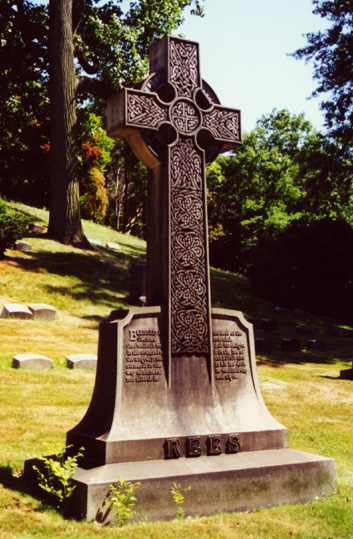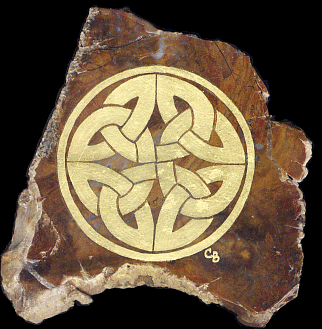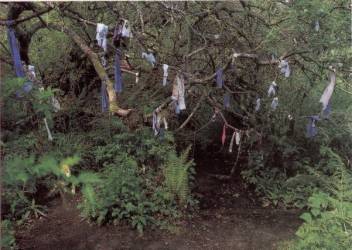
 Article
Article
The Celtic Religion
By Pascal-André Auger


 Article
Article
The Celtic Religion
By Pascal-André Auger

The mythology that the Celtic civilization has given to us as a heritage is a particularly interesting one. This Mythology had many gods and goddesses who had interactions with mortals, there were also some celebrations done by the population to have a special relation with the divinities and the Celtic traditions even had given a significance to places and made some of them sacred.

To start, it could be interesting to see the different "holidays" that the Celts had in their folklore. On the 1st of November, there was Samhain which marqued the end of the summer and probably the start of the year. On the 1st of May, it was Beltene, the start of the summer. The 1st of August, Lugnasad, was a celebration in honor to the wedding of Lug. On 1st of February, Imbolg which continued as the Ste-Brigitte holiday. The festivities had their particular place to be celebrated like Samhain was at Tara, Beltene at Uisnech, Lugnasad at Tailtiu, Emain Macha and at Carman.
The memory of these celebrations is only apparent by the Holidays for great Irish saints that correspond sometimes to the same dates such as St-Finnian in December and St-Patrick the 15-16-17 of March. All the legends and the mythologies relate to those festivity dates. The day of Beltene commemorates the arrival of the first invaders of Ireland, the children of Partholon and it also commemorates the death of Flann.
The holiday of Beltene is one of the most important for the Celts, from Irish legends, on that day, the druids asked to the god of the cattle and of the harvest to make the harvest to be bountiful and to make the cattle to proliferate more. During this day, there were rituals, festivities, games and a fair. The day before, the livestock could become enchanted unless the druids calmed the god.
At Lugnasad, many things happened, Lug's wives and Carman the magician who was the prisoner of the Goidels and the Godess named Macha have all died on that particular day.
Samhain is a date where the great battle of the gods ( the battle of Mag Tured ) took place and it's this day that the king Muircetach Mac Erca died drowned in a barrel like Flann. It's on these celebration days that the spirits were unleashed, the miracle was waited and normally realized. The popular holiday of Samain has continued in our modern world under the name of Halloween.

Now, it could be worthy to look to the history of the gods and goddesses in the Celtic mythology. First, there are the Tuatha De who were the mythic habitants of Ireland before the Celts, they are said to be the descendants of the goddess Danu.
The gods from this mythology had specific functions:
![]() Ogme,
god of the arts of the war.
Ogme,
god of the arts of the war.
![]() Lug,
god of the arts and
the techniques.
Lug,
god of the arts and
the techniques.
![]() Goibniu, god of the forge.
Goibniu, god of the forge.
![]() Diancecht, god of medecine.
Diancecht, god of medecine.
![]() Luchta, the carpenter.
Luchta, the carpenter.
![]() Credne, the worker of the bronze.
Credne, the worker of the bronze.
![]() Dagda, the
tribal god father had an abundance cauldron, the power of resurrection,
the bludgeon that had the property to give death or life and he also had
the solar wheel. He forms with his brother, Ogme, the great double ruler
of divinity.
Dagda, the
tribal god father had an abundance cauldron, the power of resurrection,
the bludgeon that had the property to give death or life and he also had
the solar wheel. He forms with his brother, Ogme, the great double ruler
of divinity.
![]() Lug is the supreme god of the pantheon. He is at the summit
of the hierarchy, he is in a different class because he transcends every functions
of the other gods.
Lug is the supreme god of the pantheon. He is at the summit
of the hierarchy, he is in a different class because he transcends every functions
of the other gods.
![]() Cuchulainn is Lug's son and he is the king of the warriors.
Cuchulainn is Lug's son and he is the king of the warriors.
![]() Taranis, the god of thunder.
Taranis, the god of thunder.
![]() Manannan, the god of the sea who are also important
gods.
Manannan, the god of the sea who are also important
gods.
Many Celtic tribes had their own divinity to protect them to bring fertility to the harvests and to the cattle. After battles, the Celts sacrificed a percentage their booty to the gods. The gods and goddesses of this mythology could feel love for each other and even for mortals, like it was the case for Midir, a Tuatha De Danann, who have fell in love with a young mortal named Etain and there were many other divinities love stories.
Finally, let's take a look to the importance that the Celts gave to their areas. Since, for the Celts, the world surrounding them and the religion could not be separated, the smallest piece of the landscape had a sacred meaning. For example, the swamp was from diabolic origins and the fires resulting from a lightning were sacred. Also, the mountains, trees, rivers, water sources had a genie. The trees were the symbol of death and revival and were a bridge between the earth and the sky, the more sacred tree was the oak and apple trees had some enchanted fruit because in the legend of Mael Duin, his crew of 18 men survived with three magic apples during 120 days on the sea.
The Celts could be in contact with their god nearly everywhere. There are many sites where statues made to worship gods and forester sanctuaries of cure done for friendly gods were found at many places. The Celts gave offerings often at sacred wells. At Penzance, in Cornouaille, there's a well where people, even today continue to attach colored tissue to the surrounding trees to show their wishes because there are still some individuals who believe in this old religion or at least continue to practice a couple of rituals.

There are also many other interesting things about the Celtic mythology and what this article contains is just the beginning, the surface of this great moment of the human's history, there are still so many fascinating details of the mythology of that period remaining...